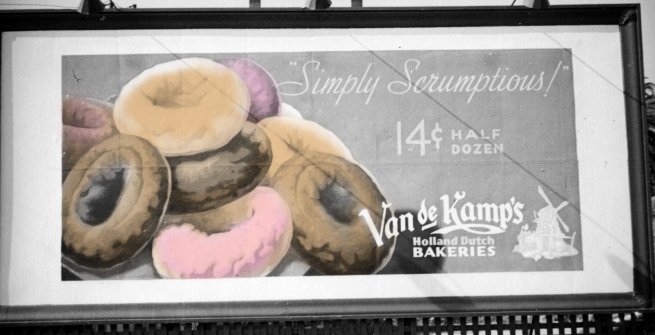Dollars to Donuts It's National Doughnut Day! Another National Holiday, another rabbit hole of information for me to jump into. The first Friday in June is officially known as National Donut Day, and here's some history about our favorite morning coffee companion.
The celebration of National Doughnut (or Donut) Day goes all the way back to World War I where 250 Salvation Army volunteers known affectionately as Doughnut Dollies brought thousands of doughnuts to servicemen on the front lines in France. (The term Doughboy does not refer to Doughnuts; another post for another day).
Firstly, we all know what a donut is, but in case you don't or are just hungry, here is Wikipedia's mouth-watering description. You may want to search for the closest donut shop after this folks!
"The two most common types are the ring doughnut and the filled doughnut, which is injected with fruit preserves, cream, custard, or other sweet fillings. Once fried, doughnuts may be glazed with sugar icing, spread with icing or chocolate on top, or topped with powdered sugar, cinnamon, sprinkles, or fruit. Other shapes include rings, balls, flattened spheres, twists, and other forms. Doughnut varieties are also divided into cake (including the old-fashioned) and yeast-risen type doughnuts. Doughnuts are often accompanied by coffee purchased at doughnut shops, convenience stores, petrol/gas stations, cafes, or fast-food restaurants."
The earliest origins of the modern doughnut are generally traced back to the olykoek (or oily cake). Dutch settlers are said to have brought the recipe with them when they settled in New York. The olykoek did not have a hole in the middle, but the ingredients and preparation were much the same. The term doughnut can be traced back to 1803 cookbooks as well.
Where the hole came from is another tangled bit of information. Some say it happened at sea with a Captain Gregory, and as a cost-saving measure, others think the center of the doughnut was filled with, what else, nuts, to save on ingredients but also to fry them up quickly without a soggy middle. Whatever the case, the hole provided a quicker more even frying which led to a better taste.
So you may notice donut is spelled two ways. It is indeed interchangeable. The terms entered the American vernacular around 1809, with Washington Irving's reference to "doughnuts" in his History of New York. The word "nut" was used as a diminutive as in a small bit of dough. The alternate spelling of Donut arrived in 1900 when the writer George Wilbur Peck had a character pronounce: "Pa said he guessed he hadn't got much appetite, and he would just drink a cup of coffee and eat a donut." According to another historian the name was shortened to make it more pronounceable by foreigners so that the company selling doughnut-making machines would appeal to a wider audience.
It wasn't until the 1920s that donuts really took off. An enterprising baker named Adolph Levitt created a machine to automate the doughnut-making process and as entertainment for people passing by his bakery. If you have ever stood in front of a bakery window and watched donuts being made, you will know the instant appeal and smell. As crowds in New York City excited the nearby theaters, the smell of frying donuts drew them in as did the little balls of dough going up into the machine. By the 1930s, Levitt was a multi-millionaire, and donuts were, "The food hit of the Century of Progress."
Fun fact: Canada has the largest concentration of doughnut shops in the world, (Japan is number two), and Canadians eat the most doughnuts in the whole world. It seems ice cream is America's number one go-to dessert.
Another fascinating aspect of the history of the donut is the pink boxes they came in which originated in Southern California. Ted Ngoy, a refugee of the Cambodian genocide who came to Los Angeles and completely transformed the doughnut selling market. Check out the fascinating documentary Donut King for the full story.
Dollars to doughnuts is one of several ‘dollars to…‘phrases, like ‘dollars to buttons’ and ‘dollars to cobwebs’, which date from 1884 (in G. W. Peck’s Boss Book) and 1904 (in The Boston Herald) respectively. It is obviously an American phrase and so it is used as donuts rather than its actual notation doughnuts. In earlier days when a dollar was worth more than it is now and a doughnut cost considerably less as compared to it, someone who was reasonably sure that an event would happen might bet upon it and say “I bet dollars to donuts” as it is used in the above examples. —Source: theidioms.com
For more information about the donut or how to fry some up at home, the library, as always, has an amazing collection of cookbooks.


















